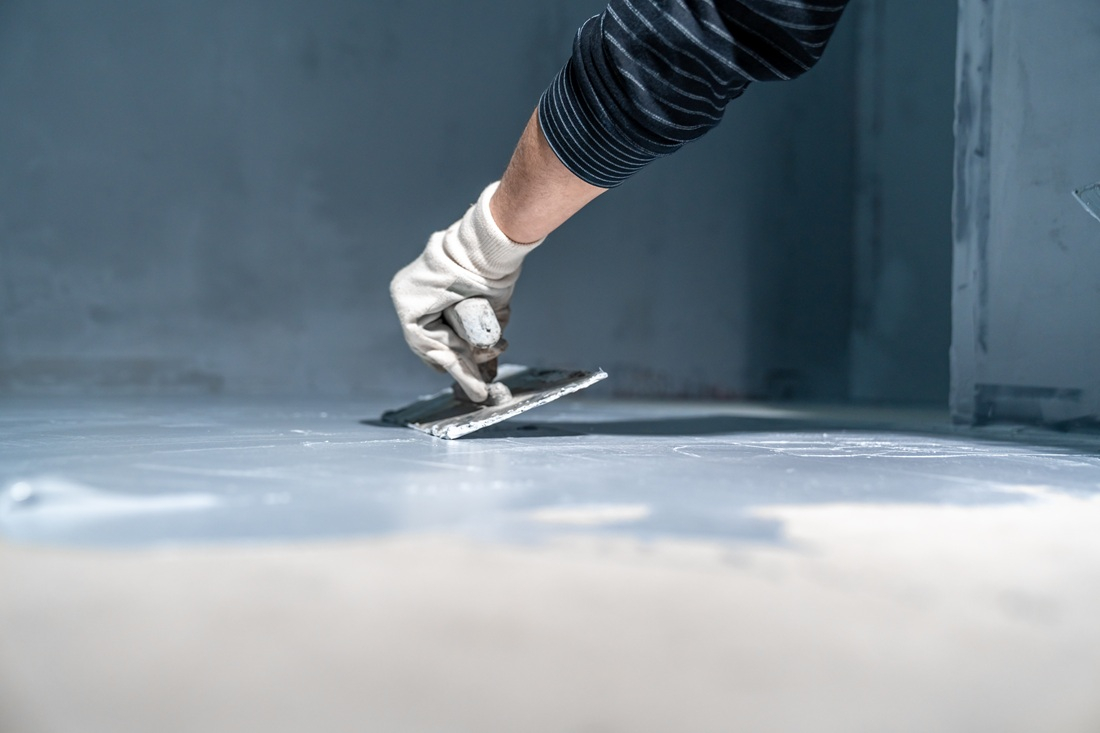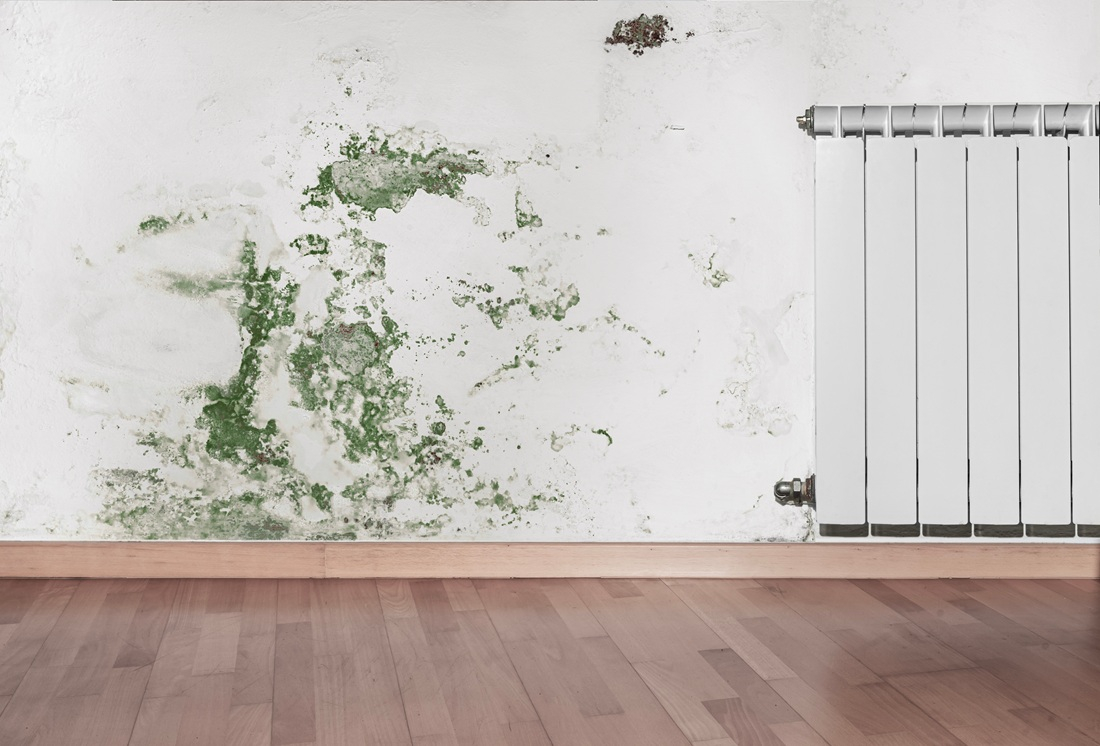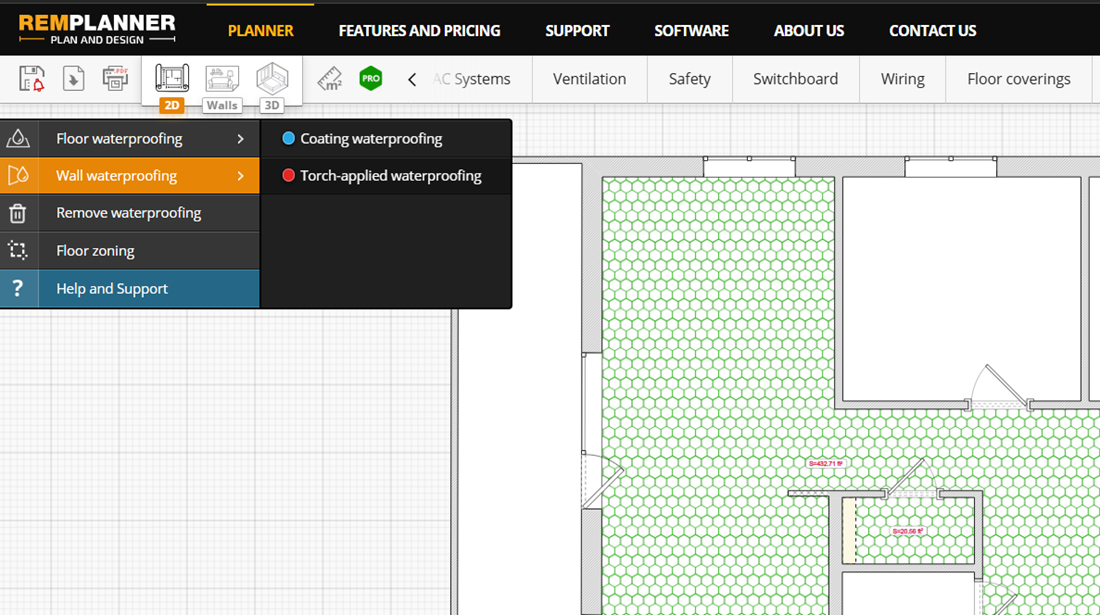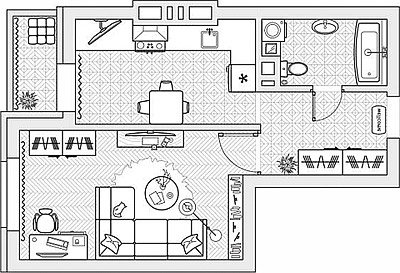Your go-to resource for expert insights and carefully curated professional advice. Plan your renovation with confidence and ease
Waterproofing Secrets Every Homeowner Should Know Before Renovating
07.08.2025, 10:00 GMT Views: 1015 Likes: 16
Discover methods, mistakes to avoid, and smart planning tools for success.

When planning a renovation, especially in spaces like bathrooms, basements, kitchens, or balconies, one element often overlooked — yet absolutely crucial — is waterproofing. Proper waterproofing protects your home from moisture damage, mold growth, structural deterioration, and costly repairs. Ignoring or underestimating this stage can turn your dream renovation into a nightmare. Here’s everything you need to know about waterproofing before and during your renovation project.
Why Waterproofing Matters
Water is one of the most destructive forces for buildings. Even small leaks or condensation can cause wood to rot, metal to corrode, tiles to loosen, and walls to develop unsightly stains. Moisture can also encourage mold and mildew, which are not only damaging but hazardous to health.

Waterproofing acts as a protective barrier that prevents water ingress, keeping the structure dry and durable. It’s especially critical in wet zones such as bathrooms, showers, laundry rooms, basements, and exterior terraces.
Planning Waterproofing in Your Renovation
1. Understand the Scope of Waterproofing Needed
Not all areas require the same level of waterproofing. Identify wet zones in your home — these are places with frequent water exposure. For example, bathrooms and kitchens need robust waterproof membranes on floors and walls. Basements might require external or internal waterproofing solutions to protect against groundwater seepage.
2. Choose the Right Waterproofing Method
There are several waterproofing options, each suited for specific conditions.
Liquid-Applied Membranes: applied with a brush, roller, or spray, these create a seamless barrier ideal for bathrooms and complex surfaces.
Roll-on Sheet Membranes: prefabricated sheets adhered to surfaces, perfect for large, flat areas but less flexible for irregular shapes.
Torch-Applied Waterproofing: bituminous membranes heated with a torch, commonly used for roofs and terraces.
How to Choose
- Bathrooms and small wet rooms: Liquid-applied membranes for easy corner coverage.
- Large floors or basements: Roll on sheet membranes for consistency and strength.
- Exteriors (roofs, balconies): Torch-applied or heavy-duty sheets for weather resistance.
To simplify the planning process, you can use modern planning tools like Remplanner — an intuitive online program designed for homeowners, even those without professional experience. It allows you to plan every detail of your renovation, including waterproofing.

Within its dedicated waterproofing module, you can choose from different types — liquid-applied, roll-on, or torch-applied membranes — and the system will automatically calculate the required amount of material based on your room layout. This makes planning not only easier but far more accurate.
3. Plan Waterproofing Early
Waterproofing must be integrated early in the renovation schedule — usually before tiling or installing fixtures. Delays or rushing this step can lead to incomplete coverage or damage during construction.
Beyond Waterproofing: What Else to Consider to Prevent Moisture Problems
Waterproofing is the foundation of moisture protection, but it’s not the only factor. To ensure your renovation stays dry and mold-free, consider these critical elements:
Proper Ventilation
Moisture often accumulates due to poor air circulation. Bathrooms, kitchens, and laundry rooms should have effective ventilation systems — whether mechanical exhaust fans or well-designed natural ventilation — to remove excess humidity.
Correct Drainage and Sloping
Ensure floors and surfaces are properly sloped toward drains to prevent water pooling. Poor drainage can lead to water stagnation, damaging waterproofing layers over time.
Quality Plumbing Installation
Leaks from plumbing fixtures or pipes are a frequent cause of water damage. Use reliable plumbing materials and ensure all joints and connections are well-sealed.
Thermal Insulation
Condensation forms when warm, moist air meets cold surfaces. Good insulation on walls and ceilings helps maintain stable temperatures and reduces condensation risks.
By the way, when planning all these steps together — waterproofing, underfloor heating, ventilation, screed, and insulation — having a single, well-structured project plan is invaluable. Remplanner - an online planning program, is particularly useful here because, from a simple layout you create, it generates a complete set of professional-grade drawings ready for contractors. This means you can avoid common mistakes caused by poor communication and ensure the correct installation of all systems from the start.
How to Find a Reliable Waterproofing Contractor
Finding a skilled contractor who respects waterproofing technology is key to success. Here are steps to ensure quality workmanship:
- Look for Specialized Experience Waterproofing requires technical knowledge and precision. Search for contractors who specialize or have extensive experience specifically in waterproofing projects. General contractors might lack the detailed expertise.
- Verify Credentials and References Ask for licenses, certifications, and references from previous clients. Reliable contractors often provide guarantees or warranties on their waterproofing work.
- Discuss Materials and Methods A good contractor should explain the recommended waterproofing methods and materials for your specific project. Be wary of those who cannot provide clear technical information or suggest shortcuts.
- Confirm Adherence to Standards Waterproofing involves strict adherence to manufacturer guidelines and construction standards. Ensure your contractor follows these, as improper application voids warranties and compromises protection.
- Request a Detailed Written Proposal The proposal should include scope of work, materials to be used, timeline, and cost. This document helps avoid misunderstandings and keeps everyone accountable.
Final Thoughts
Waterproofing is an essential, often invisible, shield that protects your renovation investment and your home’s structural health. Taking the time to plan carefully, choosing the right materials and methods, ensuring good ventilation and drainage, and hiring a qualified waterproofing contractor will save you from costly headaches and repairs down the road.
And if you want to make the process easier and more precise, tools like Remplanner are a real game-changer — giving homeowners the ability to create detailed plans that professionals can work from, while automating complex calculations like material estimates for waterproofing. That’s smart renovation planning.
Remember — moisture damage is silent but relentless. When it comes to waterproofing and moisture control, it’s better to be proactive than reactive.
 Antonella
Antonella




